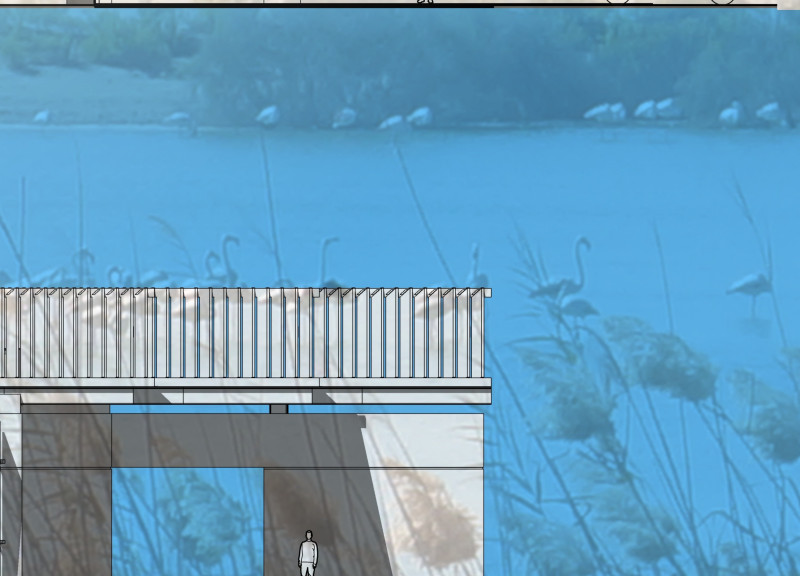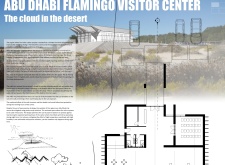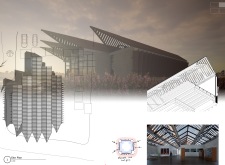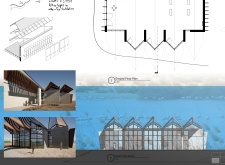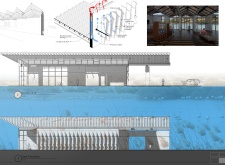5 key facts about this project
The Abu Dhabi Flamingo Visitor Center is designed to enhance the visitor experience in a region marked by extreme heat and sunlight. Its location offers stunning natural beauty, making it a prime spot for bird watching. The center focuses on providing shelter from harsh weather while allowing guests to connect with the surrounding landscape. The design concept draws inspiration from a cloud, emphasizing the need for shade, soft light, and airflow throughout the space.
Roof Design
At the core of the structure is a unique roof that mimics a cloud. It is composed of wooden "feathers" that extend outward, offering crucial shade for the south-facing side of the building. This feature not only meets practical needs for cooling but also adds an appealing visual element. The layered roof design allows filtered light to enter while protecting the interior areas from overheating.
Air Circulation
Effective air movement is vital for visitor comfort, and the building incorporates a dual-layer roofing system to achieve this. Below the primary, cloud-like roof is a glazed lower roof that blocks hot air from entering the space underneath. Vents in this lower layer draw in fresh air, ensuring proper ventilation. This careful planning supports a comfortable microclimate inside, allowing for good airflow as visitors move through the center.
Wall Construction
The walls are made from precast concrete panels designed with air cavities that act as thermal insulators. These panels help keep the internal temperature stable by letting warm air escape through openings at their base. Additionally, vertical wooden fins are used to protect the walls from direct sunlight, further reducing heat absorption and improving thermal efficiency.
Details and Experience
The layout of the visitor center is arranged to facilitate easy movement and interaction with the natural surroundings. This design choice helps visitors enjoy the experience as they explore the space. Attention to detail is evident in how light and shadow play across the interiors, creating a lively atmosphere where architecture and nature meet. Each area invites moments of pause, fostering connection with the environment outside.


